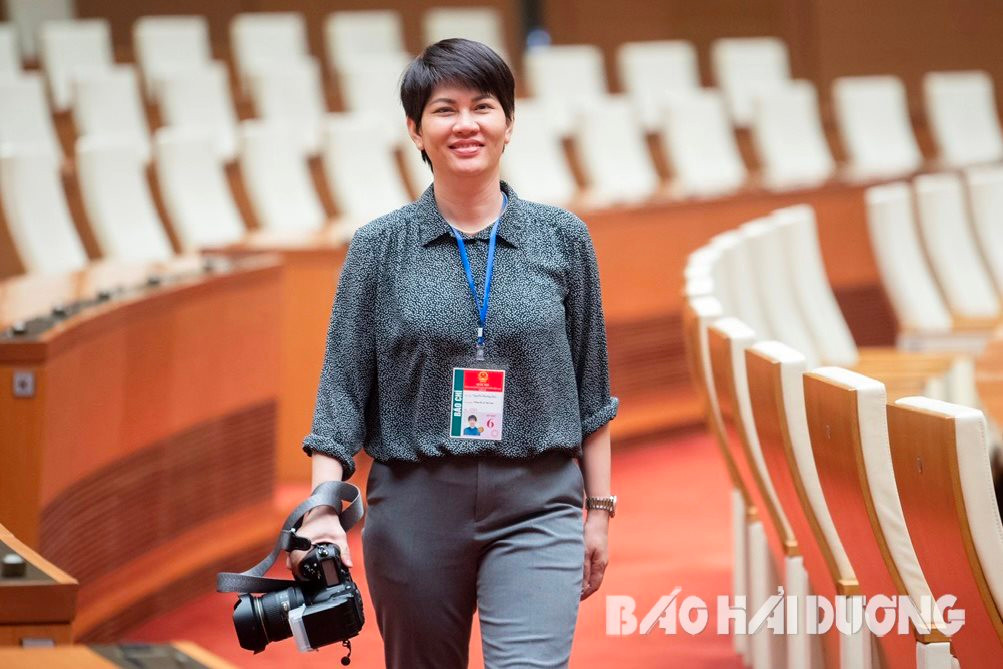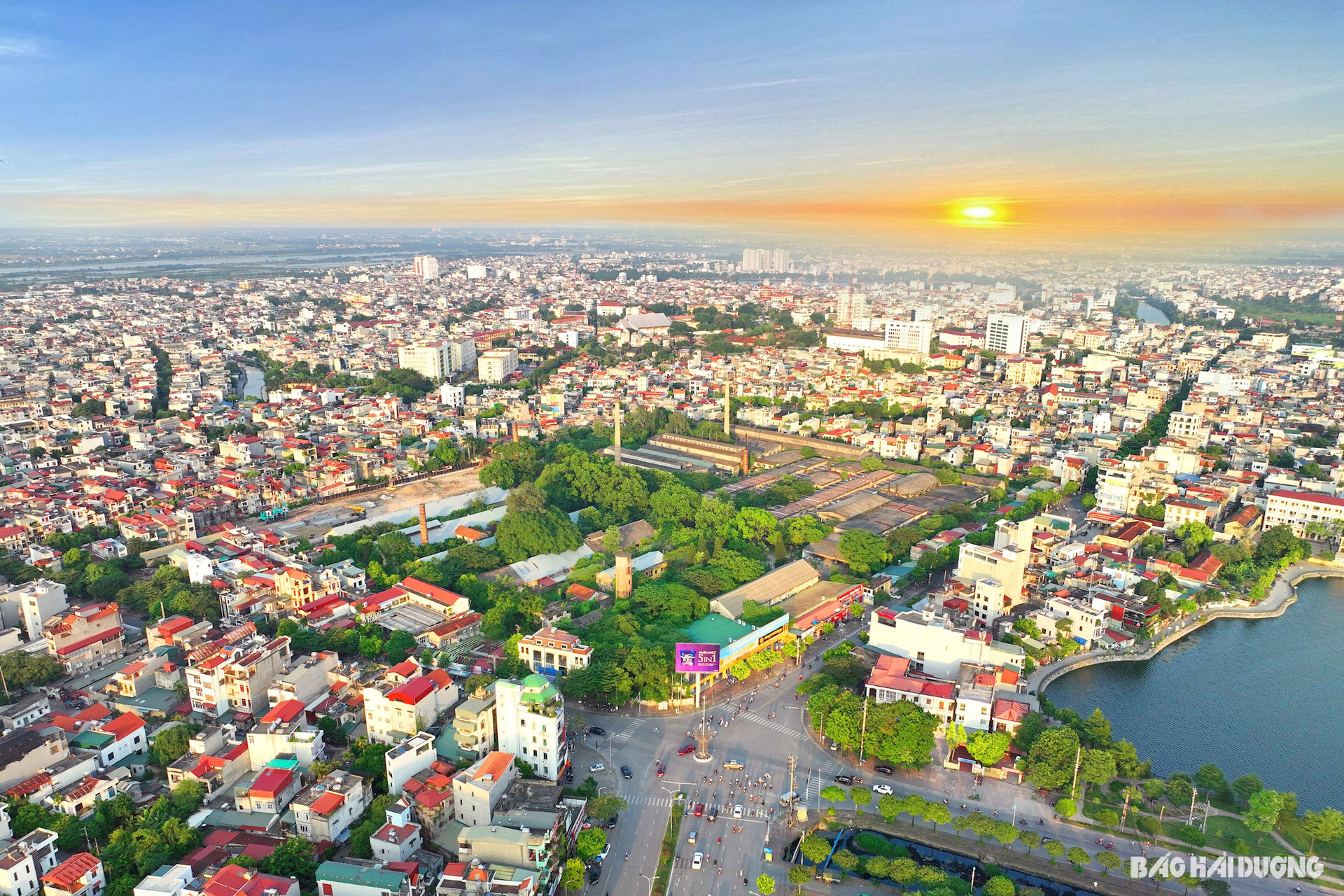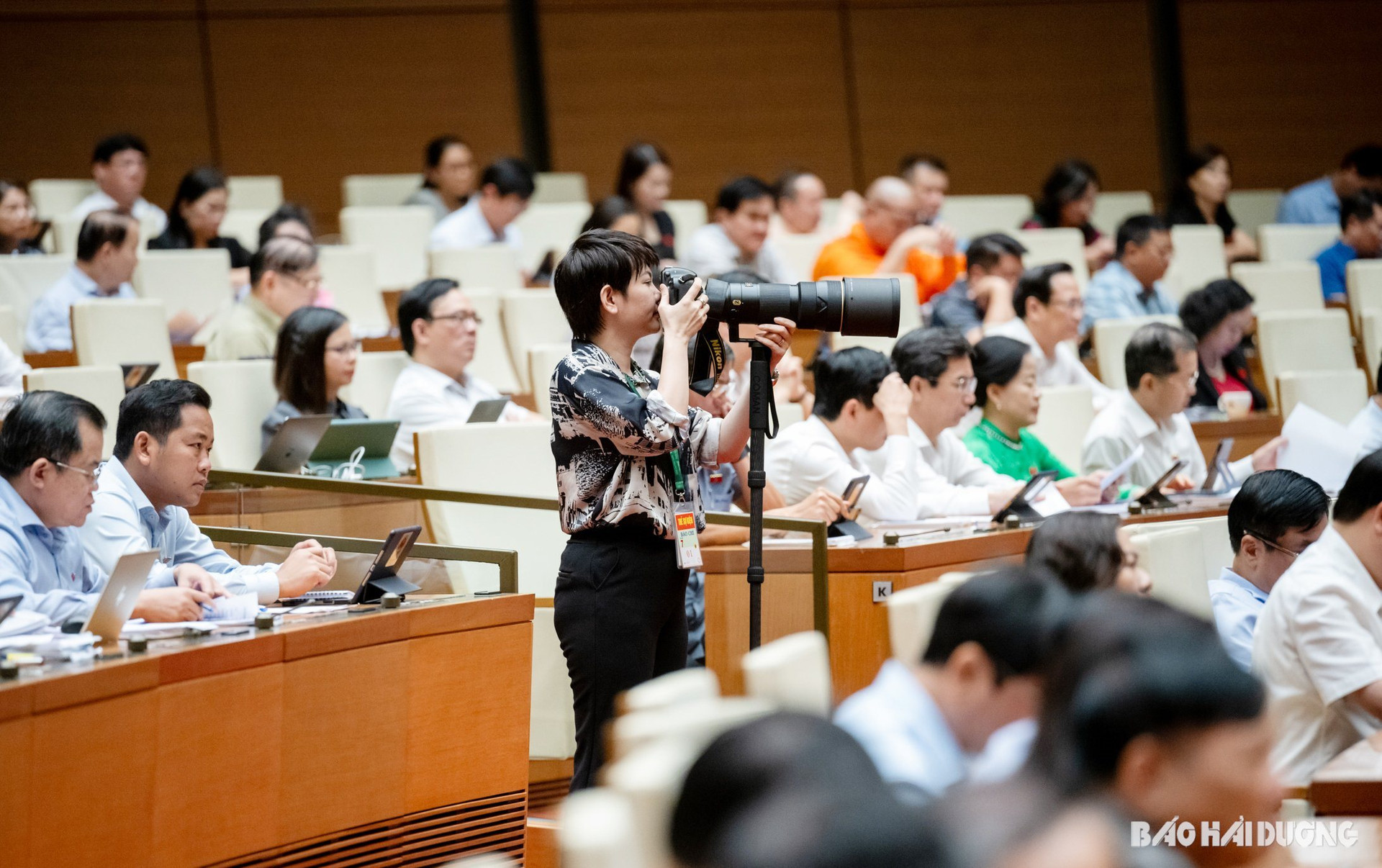Working for nearly 20 years at Vietnam News Agency, photojournalist Phuong Hoa has been able to satisfy her passion, set foot in many lands, and record many beautiful moments in life.

Since she was a high school student, Ms. Phuong Hoa (from Ninh Giang district) dreamed of becoming a reporter to travel here and there, learn about things she did not know, and satisfy her passion for travel. After graduating from high school, she was admitted directly to university and chose the Faculty of Journalism, University of Social Sciences and Humanities.
In her second year of university, when she heard that Hanoi University of Theatre and Cinema was opening its first photography class, she took the exam and studied for two degrees in journalism and photography at the same time.
Studying photography, every student is required to have a camera. At that time, Hoa's brother bought her an old German PRAKTICA for 500,000 VND, which took film and focused on strawberry flowers. That was the camera that accompanied her throughout her student years, and she still keeps it as a souvenir. When she first started her career, she had to learn the first lessons, from connecting film to save money, choosing angles, themes, characters, to film development exercises, developing photos in the darkroom...
“When I studied photography, I realized that I was interested in capturing beautiful moments in life. Every message I wanted to convey was in a frame, through the angle I approached it from. Perhaps the profession chose me,” Ms. Phuong Hoa shared.

After graduating from university, she took the entrance exam to Vietnam News Agency and has been working in the Photo Editorial Department since then.
When she first started working at the Photo Editorial Board, she was in charge of the cultural and social section, and was able to travel and explore unknown regions. There were places like the Dan Lai ethnic group in Pu Mat National Park (Nghe An), the Chut ethnic group in Rao Tre village (Huong Khe, Ha Tinh)... where people were still shirtless and wearing loincloths. She recorded those images and they later became historical documents.
Later, she switched to the field of domestic and diplomatic photography, which requires reporters to have a political perspective. When participating in major national events, they need to be highly focused and not make any mistakes. According to Ms. Hoa, no matter what field they are in, photojournalists need to have a sharp mind, observation, and judgment.

The job of a photojournalist requires quickness and endurance. Each time she goes on assignment, she usually carries 10-15 kg of equipment, depending on the event. Especially on overseas assignments, she has to compete with hundreds of reporters from other countries, only quickness and perseverance win, there is no priority for women.
According to Ms. Hoa, to become a good photojournalist, one must have intelligence, skills and emotions. Intelligence is to have broad knowledge accumulated every day, be sensitive, closely follow life, grasp events and issues quickly. When facing an event, unlike a writer, a photojournalist only has one single moment to express the essence of the event at its typical moment, if missed it is a failure. Skills are to master the camera, understand its features, and skillfully use photographic techniques: light, color, lines, angles, composition, sharpness, etc. To choose the most characteristic moments, find the most suitable angle, a photojournalist must have the ability to observe and detect the subject as quickly as possible. That ability must be practiced every day to become a professional reflex. Photography is the art of seeing. And a good press photo must also bring emotions to the viewer.

Having worked at many major political events of the country such as the 12th and 13th National Party Congresses, Party Central Committee meetings, National Assembly meetings or the welcoming ceremony for heads of state of major countries visiting Vietnam... but perhaps the photo series "Truong Sa Vitality" left the most impression on her. That was the first time she went to Truong Sa in 2009, during Tet.
Ms. Hoa recalls: “Usually, female reporters are not allowed to go during Tet because it is the stormy season, the hard trip can easily affect their health. But I insisted on going because I wanted to go to Truong Sa, wanted to record images of the soldiers on the island”. The photo series “Truong Sa Vitality” after that trip won the B prize (the highest prize in the press photo category) of the National Press Awards in 2010.

In addition, she has also won many other awards such as the A prize of the National Foreign Information Award in 2020, the B and C prizes of the National Press Award on Party building in 2019, 2020, 2021...
Up to now, she has traveled to every province and city in the country, and wherever she has been, she has gained more knowledge about geography, culture and people. In the past, when she went to any province, she rented a motorbike to travel around, taking photos as she went. Knowledge from real-life experiences is the greatest benefit that journalism has brought her.
With nearly 20 years of experience, Ms. Hoa is especially fond of the saying “a picture is worth more than a thousand words”, showing how valuable the information in a press photo is. “A photo is static, but what we see in the photo is accuracy and honesty. Therefore, a press photo may have extra or missing details, but that is not important as long as they are authentic photos capturing moments that sometimes only the photographer can see”, said reporter Phuong Hoa.
Currently, Ms. Hoa is a visiting lecturer in photojournalism at the Faculty of Photography, Hanoi University of Theatre and Cinema. She still advises students that in addition to studying a photography major, they need to learn other skills such as writing articles, filming, editing videos, graphic design, using photo processing software and foreign languages. Cultivate skills that are related to the career you choose so that when you graduate, you can do whatever is needed.
LINH LINH